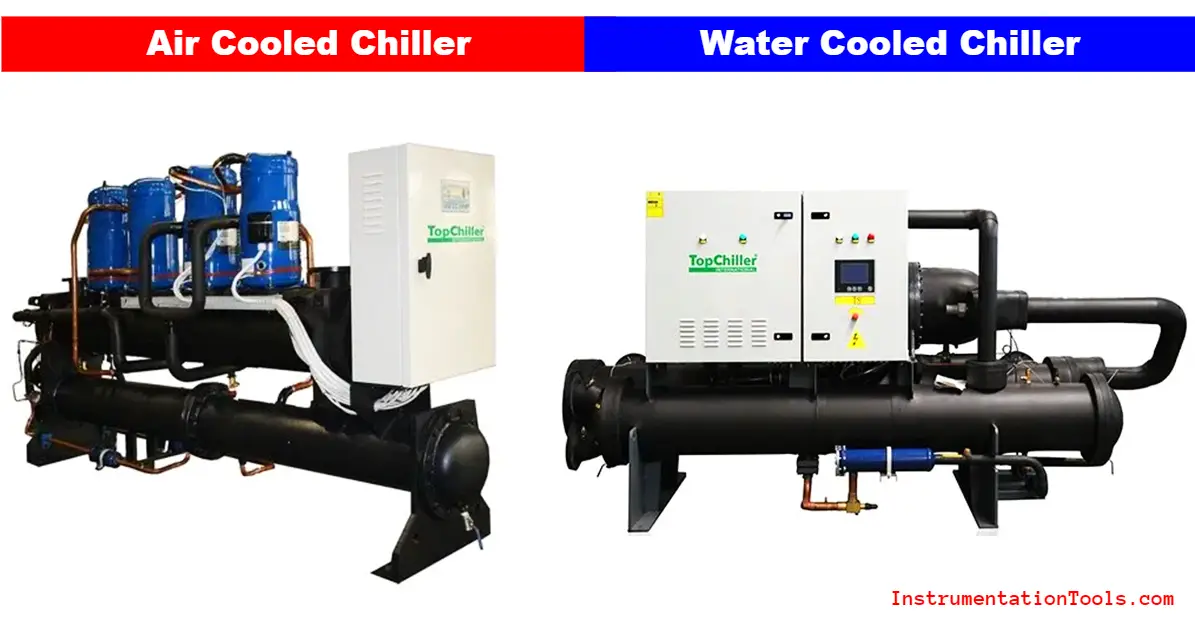In this post, we will learn the difference between water cooled and air cooled chillers.
HVAC is a very vast field and it comprises of many devices. One of the main components in HVAC is a chiller. Chiller is a refrigerant component which is used to cool the temperature of water, air or evaporation. They are used in many commercial and industrial applications.
Chillers are classified into various categories. One of them is based on cooling medium used in condensers. There are two types of that – water cooled and air cooled. In this post, we will see the difference between water cooled and air cooled chillers.
To understand first of all how a refrigeration cycle works, refer to the below article. It will help to then understand the chillers more easily.
As the name implies, Water Cooled chiller uses water as a condensing medium. In condensers, water from the cooling tower is used to condense the hot gas coming from the compressor. The remaining refrigerant cycle remains the same. When the final gas reaches evaporator coils, it does heat exchange with a warm medium (water or air) and cools its temperature.
Cooling Tower is a big building that circulates water with chiller condensers. So, you can say it is a facility where unwanted heat dissipates. There is a large fan that feeds the unit with air, which meets the incoming warm water from the condenser. Heat exchange happens between air and water, and the water becomes cooler.
As the name implies, an Air-cooled chiller uses the air as a condensing medium. Condensing fans are used to condense the hot gas coming from the compressor. The remaining refrigerant cycle remains the same. When the final gas reaches evaporator coils, it does heat exchange with a warm medium (water or air) and cools its temperature.
Outside ambient air is used to reduce the temperature of refrigerant gas coming from the compressor. The incoming fans suck air from outside and allow heat exchange. The resultant warm air is also eliminated outside by the outgoing fans.

The following are the key points that discuss the differences between air-cooled chillers and water-cooled chillers.
In this way, we understand the difference between an HVAC air-cooled chiller and water cooled chiller.
PLC ladder logic design to control 3 motors with toggle switch and explain the program…
VFD simulator download: Master the online tool from the Yaskawa V1000 & programming software for…
The conveyor sorting machine is widely used in the packing industries using the PLC program…
Learn the example of flip-flop PLC program for lamps application using the ladder logic to…
In this article, you will learn the STAR DELTA programming using PLC controller to start…
Lube oil consoles of rotary equipment packages in industrial process plants are usually equipped with…